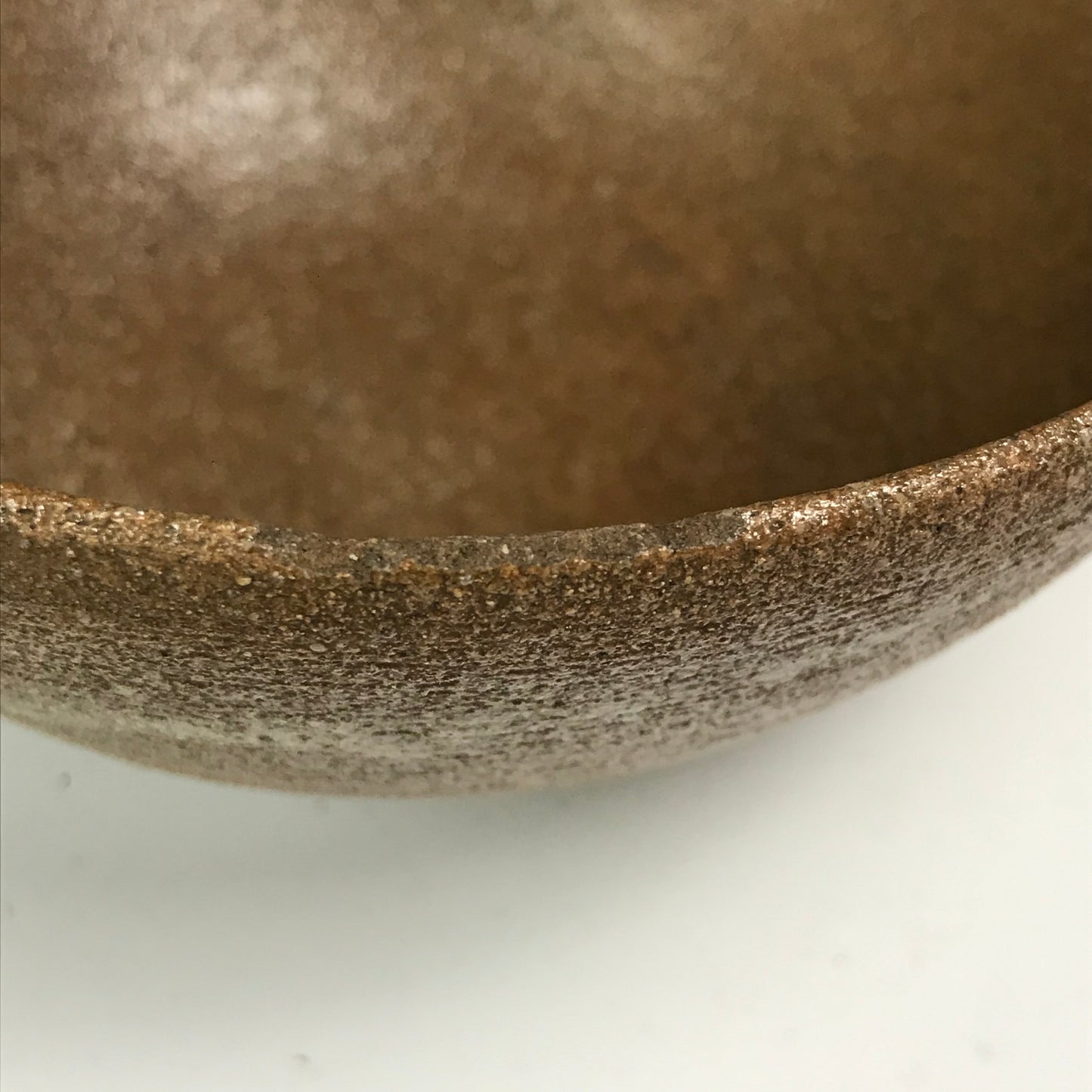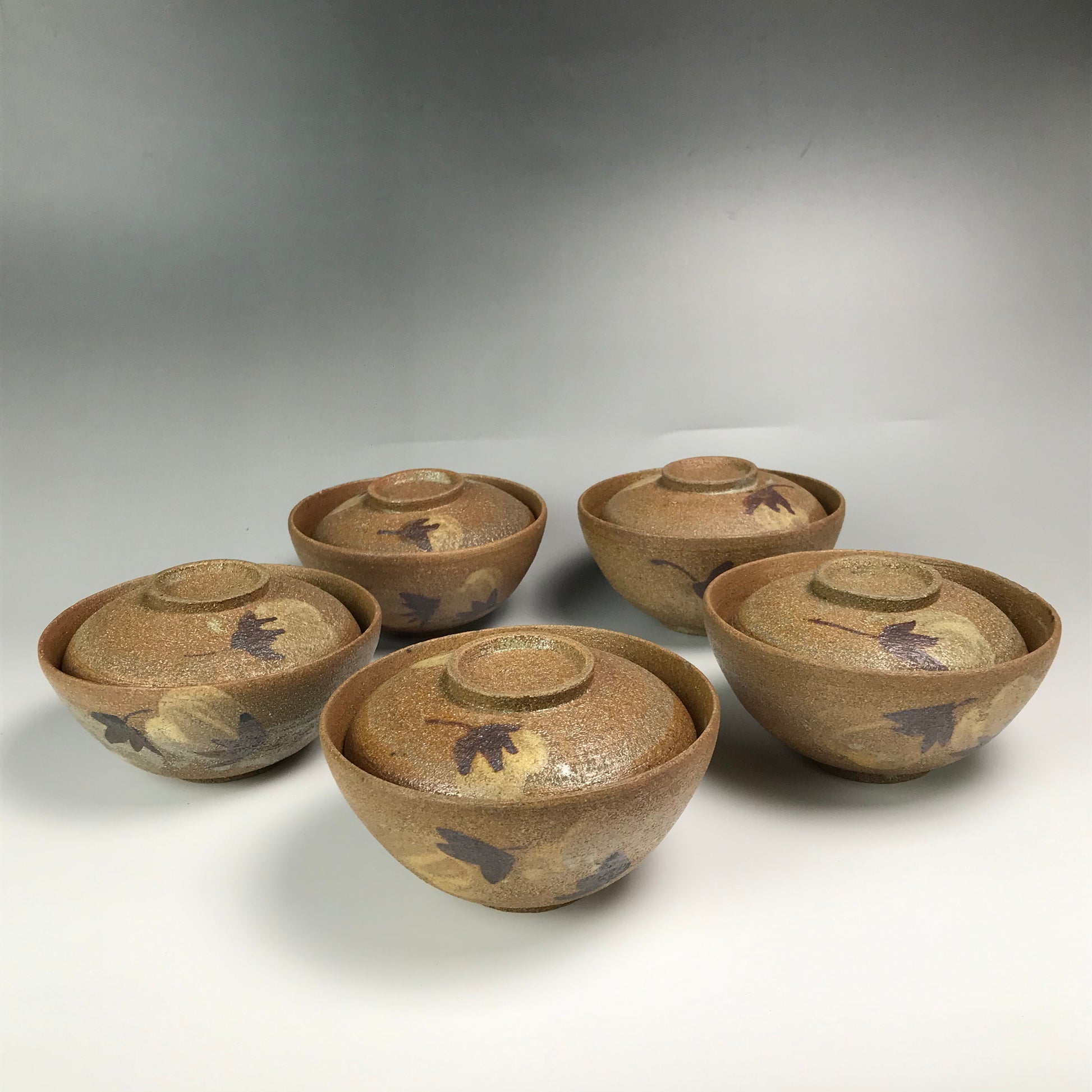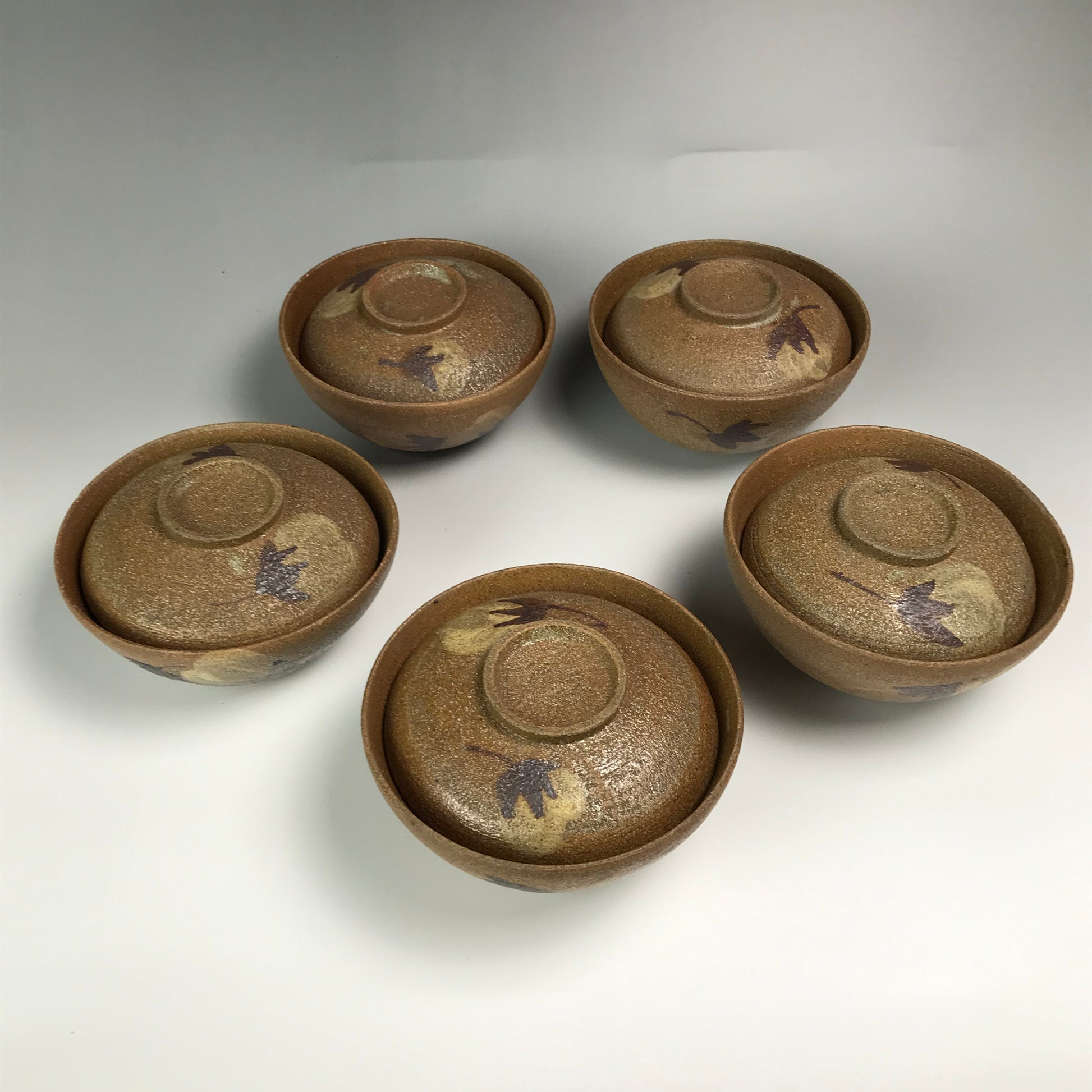Rare Boxed Set of 5 Akashi Yaki Covered Bowls
Rare Boxed Set of 5 Akashi Yaki Covered Bowls
Item Code: K142
受取状況を読み込めませんでした
A set of five covered bowls from the Akashi kilns of the 19th century decorated with cotton flowers on brown sandy clay. Each bowl is roughly 11.5 cm (4-1/2 inches) diameter, 6 cm (2-1/4 inches) deep. There are minor abrasions to the soft clay along the rims, but no cracks, and overall in rare fine used condition.
Akashiyaki is a type of ceramic from Akashi, Hyogo Prefecture influenced by Mishima, Ko-Kiyomizu and Ninsei wares which reached its peak in the latter half of the Edo period. At the beginning of the Edo period, Tadazane Ogasawara from the Matsumoto domain of Shinano Province was granted the Akashi area with a value of 100,000 koku and founded the Akashi domain. Tadamasa strove to establish Akashi Castle and improve the castle town and economics of the province. According to one theory, Tadamasa initially invited Nonomura Ninsei from Kyoto, and had him develop a kiln to fire pottery which began the industry development. In the Genna era, a government kiln was built and Toda Oribenosuke began firing pottery in Akaura, Toba village. This is known today as Ko-akashiyaki. Bizen-style and Mishima-style tea pottery were produced and loved by tea masters. After that, the production of Akashiyaki was suspended for a period of time during the Tenmei period, but Tezuka Magoichiro, the group magistrate of Akashi Town, had Yamada Kikutaro reestablish the industry during the boom years of the Bunka/Bunsei eras in the early 19th century. Akashiyaki continued to be produced in this way into the Meiji era, however most of the production was for everyday items, and was rarely fired in large quantities, so as mass production took over it declined flourished from the end of the Meiji period to the beginning of the Taisho period
Share




















